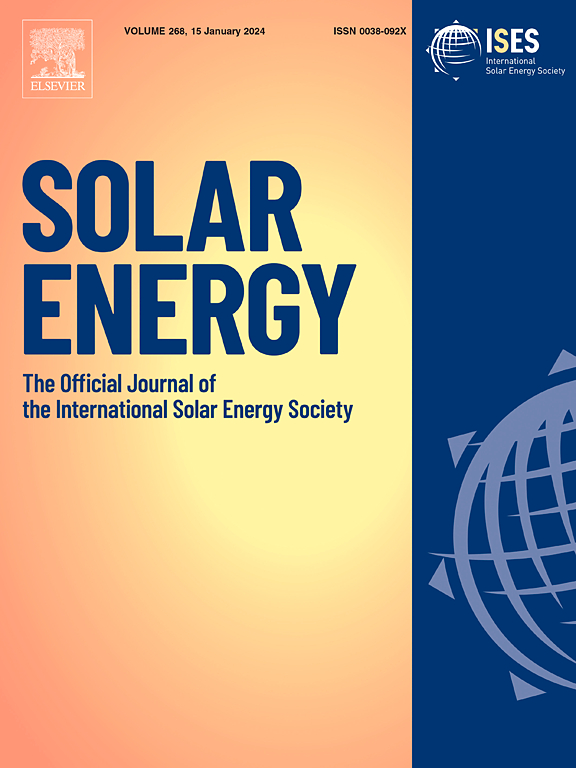A zero-carbon integrated energy system energized by CSP + PV: A real case of isolated grid
IF 6
2区 工程技术
Q2 ENERGY & FUELS
引用次数: 0
Abstract
The integration of concentrated solar power (CSP) system and photovoltaic (PV) can extend the dispatchability of solar energy while contributing to carbon neutrality goals. This paper investigates a real case of zero-carbon integrated energy system energized entirely by solar energy, incorporating CSP, PV, thermal energy storage (TES), and batteries. The system utilizes an extraction condensing steam turbine with flexible heat-to-power ratio as CSP power block, complemented by a segregated steam generation system (S-SGS) enabling direct thermal production from TES, to reduce coupling between electrical and thermal outputs. Based on the case, comprehensive techno-economic analysis through annual hourly production simulation demonstrates that the hybrid system achieves continuous 24-hour operation and meets a 91.17% annual production rate with a levelized cost of energy (LCOE) of 0.121 USD/kWh, representing 2.4% and 4 % reduction compared to the system operating without S-SGS and in separate heat and power production modes, respectively. For reliability enhancement, our analysis reveals that a thermal storage duration to solar multiple ratio of 5.5–5.8 enables the most economically efficient reliability improvements. This optimization allows the system to achieve a 99% annual production rate at an LCOE of 0.172 USD/kWh. However, attaining reliability levels comparable to conventional urban power grids would necessitate prohibitively expensive investments despite significant technological advances.
CSP + PV驱动的零碳综合能源系统:一个孤立电网的真实案例
将聚光太阳能发电(CSP)系统与光伏发电(PV)系统相结合,可以提高太阳能的可调节性,同时有助于实现碳中和目标。本文研究了一个完全由太阳能供电的零碳综合能源系统的实际案例,该系统包括CSP, PV,热能储存(TES)和电池。该系统采用具有灵活热功率比的抽汽冷凝汽轮机作为CSP动力模块,辅以分离蒸汽发生系统(S-SGS),可从TES直接产热,以减少电和热输出之间的耦合。结合实例,通过年度小时生产模拟综合技术经济分析表明,该混合系统实现24小时连续运行,年生产效率达到91.17%,平准化能源成本(LCOE)为0.121美元/千瓦时,与不使用S-SGS和单独产热产电模式相比,分别降低2.4%和4%。为了提高可靠性,我们的分析表明,蓄热时间与太阳能倍数的比值为5.5-5.8,能够最经济有效地提高可靠性。这种优化使系统在LCOE为0.172美元/千瓦时的情况下实现99%的年生产率。然而,尽管取得了重大的技术进步,但要达到与传统城市电网相当的可靠性水平,将需要昂贵的投资。
本文章由计算机程序翻译,如有差异,请以英文原文为准。
求助全文
约1分钟内获得全文
求助全文
来源期刊

Solar Energy
工程技术-能源与燃料
CiteScore
13.90
自引率
9.00%
发文量
0
审稿时长
47 days
期刊介绍:
Solar Energy welcomes manuscripts presenting information not previously published in journals on any aspect of solar energy research, development, application, measurement or policy. The term "solar energy" in this context includes the indirect uses such as wind energy and biomass
 求助内容:
求助内容: 应助结果提醒方式:
应助结果提醒方式:


